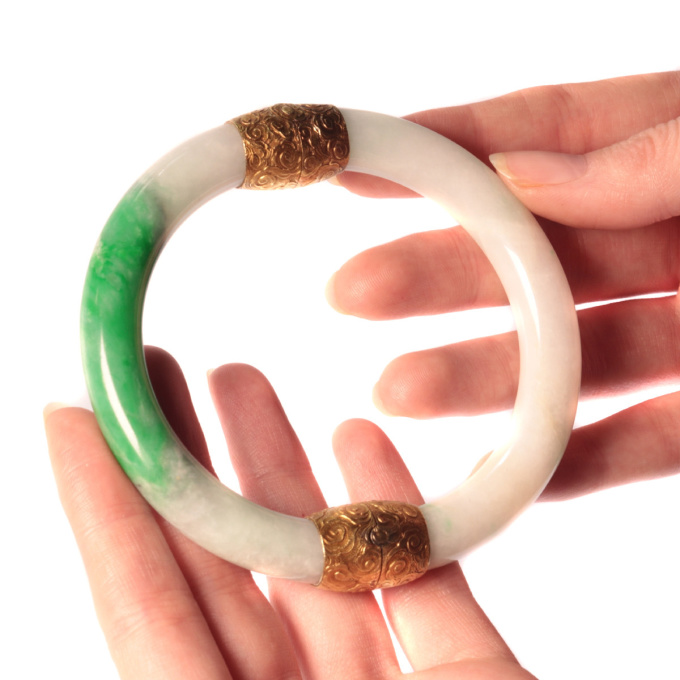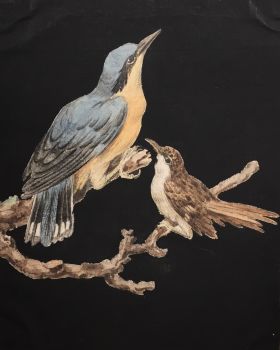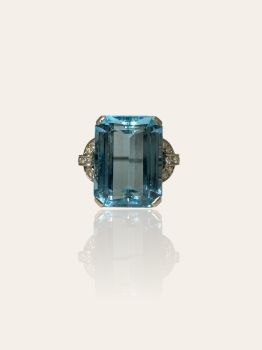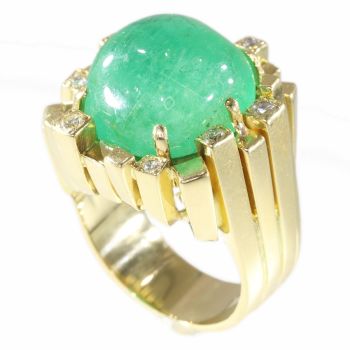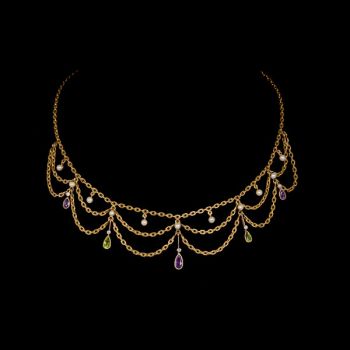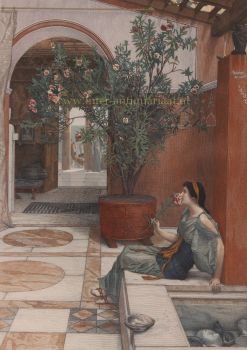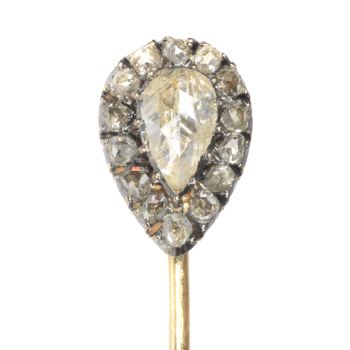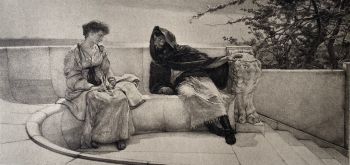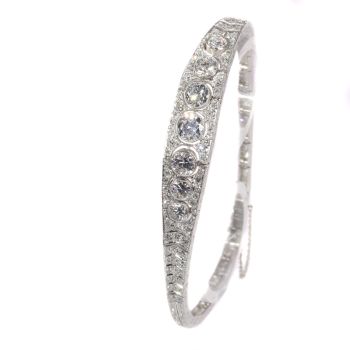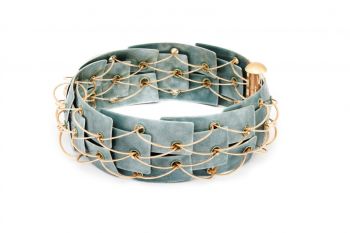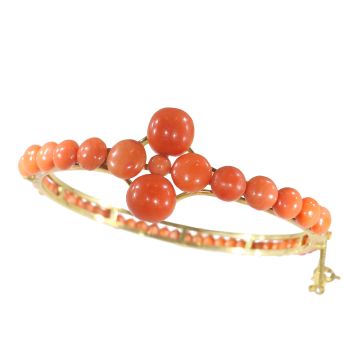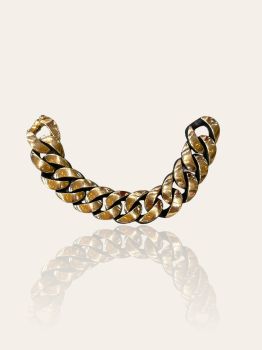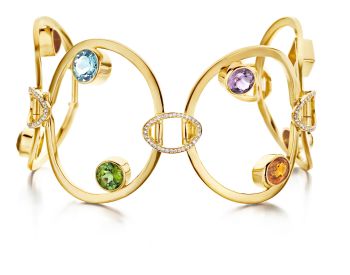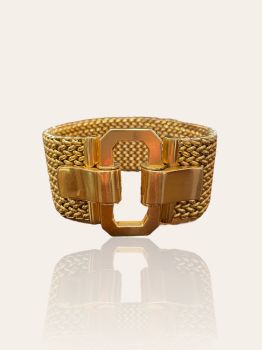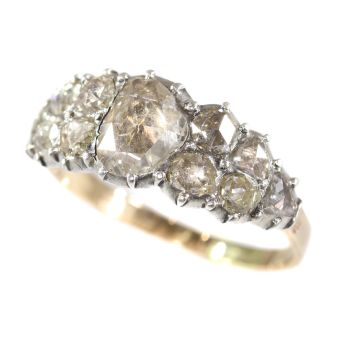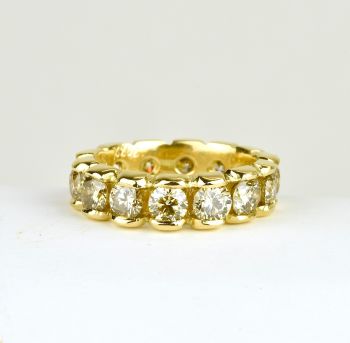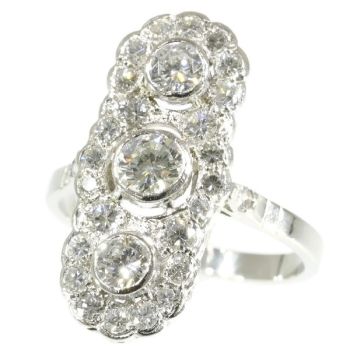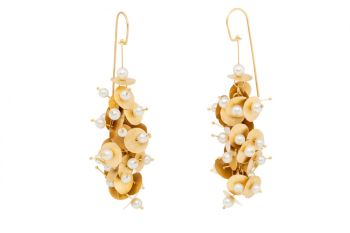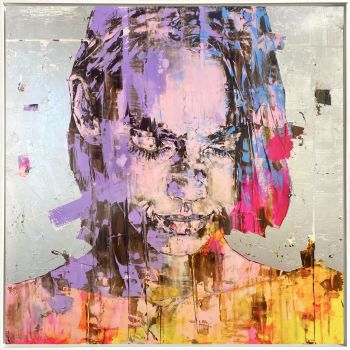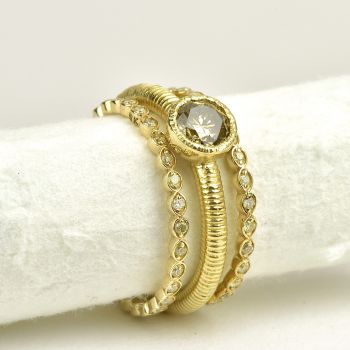Bracelete vitoriana com certificação A-jade com fecho em ouro 18K e dobradiça 1880
Artista Desconhecido
OuroJadeGemstone
Atualmente indisponível via Gallerease
- Sobre arte
Antique jewelry object group: bangle
Condition: very good condition
- (more info on our condition scale)
Country of origin: unknown, China?
Style: Victorian - Victorian decorative arts refers to the style of decorative arts during the Victorian era. The Victorian era is known for its eclectic revival and interpretation of historic styles and the introduction of cross-cultural influences from themiddle east and Asia in furniture, fittings, and Interior decoration. Victorian design is widely viewed as having indulged in a regrettable excess of ornament. The Arts and Crafts movement, the aesthetic movement, Anglo-Japanese style, and Art Nouveaustyle have their beginnings in the late Victorian era.
- See also: Victorianor more info on styles
Style specifics: The Romantic Victorian Period - Experts divide the reign of Queen Victoria, also called The Victorian era (1837 - 1901) in to three periods of about twenty years each; The Romantic Victorian Period (1837 - 1860), The Grand Victorian Period (1860 -1880), and the Late or Aesthetic Victorian Period (1880 - 1901).
We consider this to be of the Romantic Victorian Period. This period covers the coronation of Victoria as Queen of Great Britain and Ireland, and her marriage to King Albert and their love, their devotion to their marriage and to their country are thesources of inspiration for this period. The jewels of this period are made of intricate carvings, special techniques where the enamel is subtly worked. These techniques allowed to give the jewel a certain opulence with less precious metal needed. Asprecious metals were really rare at that time. Highly favored (semi-) precious stones in this period are amethyst, coral, garnets, seed pearls and turquoises. The connotation is obviously sentimental, symbolic and romantic with reminiscent Gotic and/orRenaissance patterns and an abundant use of motifs like anchors, birds, branches, crosses, hearts and snakes.
Period: ca. 1880
- (events & facts of this era, poetry of this era, fashion of this era)
Material: 18K yellow gold (touchstone tested)
- (more info on precious metals)
Extra information: Jade - Jade refers to an ornamental mineral, mostly known for its green varieties. It can refer to either of two different minerals: nephrite, a silicate of calcium and magnesium, or jadeite, a silicate of sodium and aluminium.
Jade is featured prominently in ancient Asian art, but also has an important place in many other cultures.
In the history of the art of the Chinese empire, jade has had a special significance, comparable with that of gold and diamonds in the West. Jade was used for the finest objects and cult figures, and for grave furnishings for high-ranking members of theimperial family. Due to that significance and the rising middle class in China, in 2010 the finest jade when found in nuggets of "mutton fat" jade – so-named for its marbled white consistency – could sell for $3,000 an ounce, a tenfold increase from adecade previously.
Jade may be enhanced (sometimes called "stabilized"). Some merchants will refer to these as grades, but degree of enhancement is different from colour and texture quality. In other words, Type A jadeite is not enhanced but can have poor colour andtexture. There are three main methods of enhancement, sometimes referred to as the ABC Treatment System:
Type A jadeite has not been treated in any way except surface waxing.
Type B treatment involves exposing a promising but stained piece of jadeite to chemical bleaches and/or acids and impregnating it with a clear polymer resin. This results in a significant improvement of transparency and colour of the material. Currently, infrared spectroscopy is the most accurate test for the detection of polymer in jadeite.
Type C jade has been artificially stained or dyed. The effects are somewhat uncontrollable and may result in a dull brown. In any case, translucency is usually lost.
B+C jade is a combination of B and C: it has been both impregnated and artificially stained.
Type D jade refers to a composite stone such as a doublet comprising a jade top with a plastic backing.
(From: Wikipedia)
Precious stones: Twopieces of A quality jade (see pictures for certificate)
Engraving: both hinge and closure are skillfully hand engraved
Hallmarks: No trace.
- (more info on hallmarks)
Dimensions: inner circumference 20,80 cm (8,19 inch) - See picture with a ruler in cm and inches
Weight: 84,90 gram (54,59 dwt)
Reference Nº: 19254-0157
Copyright photography: Adin, fine antique jewelry
- Sobre artista
Pode acontecer que um artista ou criador seja desconhecido.
Algumas obras não devem ser determinadas por quem são feitas ou são feitas por (um grupo de) artesãos. Exemplos são estátuas dos tempos antigos, móveis, espelhos ou assinaturas que não são claras ou legíveis, mas também algumas obras não são assinadas.
Além disso, você pode encontrar a seguinte descrição:
•"Atribuído a …." Na opinião deles, provavelmente uma obra do artista, pelo menos em parte
• “Estúdio de…” ou “Oficina de” Em sua opinião um trabalho executado no estúdio ou oficina do artista, possivelmente sob sua supervisão
• "Círculo de ..." Na opinião deles, uma obra da época do artista mostrando sua influência, intimamente associada ao artista, mas não necessariamente seu aluno
•“Estilo de…” ou “Seguidor de…” Na opinião deles, um trabalho executado no estilo do artista, mas não necessariamente por um aluno; pode ser contemporâneo ou quase contemporâneo
• "Maneira de ..." Na opinião deles, uma obra no estilo do artista, mas de data posterior
•"Depois …." Na opinião deles uma cópia (de qualquer data) de uma obra do artista
• “Assinado…”, “Datado…” ou “Inscrito” Na opinião deles, a obra foi assinada/datada/inscrita pelo artista. A adição de um ponto de interrogação indica um elemento de dúvida
• "Com assinatura ….”, “Com data ….”, “Com inscrição ….” ou “Tem assinatura/data/inscrição” na opinião deles a assinatura/data/inscrição foi adicionada por outra pessoa que não o artista
Artwork details
Related artworks
- 1 - 4 / 12
- 1 - 4 / 24
Artista Desconhecido
Pulseira de diamante do século 18 com entalhes de 2.000 anos1790
€ 23.000Adin Fine Antique Jewellery
 Com curadoria de
Com curadoria deDanny Bree
1 - 4 / 24- 1 - 4 / 24
Samuel Dejong
Anatomia Blue Heritage, Hercules Open2017 - 2019
Preço em pedidoVilla del Arte Galleries
 Com curadoria de
Com curadoria deGallerease Magazine
1 - 4 / 24

